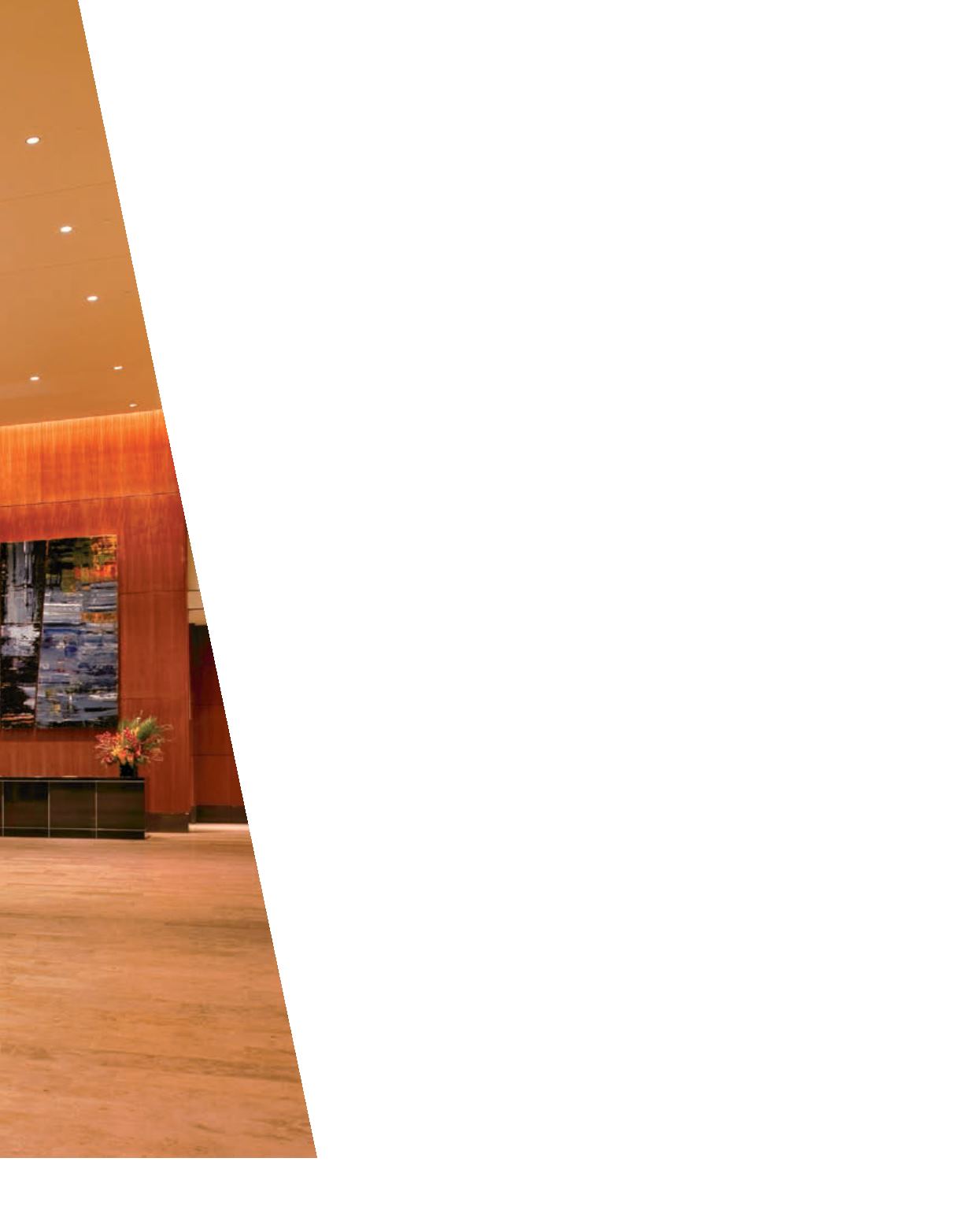

MARCH 2015 \ BUILDING DIALOGUE \
105
WORDS:
ClintonWaiz
A
mid the recent redevelopment surrounding Denver’s Historic Union Station, one
sleek commercial high-rise has quietly distinguished itself on a national level. Meet
1900 Sixteenth Street, the first multitenant office building anywhere to achieve three
distinct Leadership in Energy and Environmental Design certifications from the U.S.
Green Building Council. Having recently added the LEED Platinum rating for Existing
Building: Operations and Maintenance to previous certifications for Core and Shell
(Gold) and Commercial Interiors (Certified), 1900 Sixteenth Street sets a new sustainability bench-
mark for multitenant office buildings.
Perhaps 1900 Sixteenth Street’s under-the-radar accomplishment has been overshadowed by
the tremendous pace and volume of area redevelopment. After all, it is adjacent to one of the
most dynamic urbanmakeovers in the United States. In 2006, when the design process was ini-
tiated, much of what surrounded the site was a rail yard that felt forgotten between the Platte
and Lower Downtown. The property’s visionary development team, however, saw the parcel
as ideal for developing a uniquely sustainable office complex that is now the first of its kind.
“From the beginning, 1900 Sixteenth Street targeted high-level sustainability as a primary
objective,” remarked Collin Kemberlin, a principal with Tryba Architects, project designers.
“Everyone on the ownership side, from Bentall Kennedy, the real estate adviser, to Trammell
Crow, the developer, and CBRE, the property manager, were all very familiar with the LEED
rating system. They listened to conversations about long-term value and payback periods
related to decision-making.” Tryba was merged with Saunders Construction in a construc-
tion manager/general contractor delivery agreement that allowed the two firms to func-
tion as equal partners but operate under separate contracts with the owner.
Just steps from theMillenniumBridge, the teams at Tryba and Saunders worked close-
ly with the owners to envision a dual-building office complex with shared parking and
a pedestrian plaza. Built on a podium parking structure, 1900 Sixteenth Street and its
sister building, the DaVita World Headquarters, take advantage of the area’s tremen-
dous alternative transportationpossibilities provided by themultimodal Union Station
complex.
LEED Core and Shell was an obvious first in terms of meeting the owner’s objec-
tives. Going fromCS to Commercial Interiors, however, was more of a delicate process.
Doing so required the team to work directly with occupying tenants who would be
fitting out their new space. With a total of 21 tenants, each with individual business
needs and interests, finding uniform treatments for interior finishes simply wasn’t
realistic in today’s brand-centric market. Instead of prescribing specific finish ma-
terials, Tryba’s approach entailed creating a Tenant Design Standard, a document
that served as something of a roadmap to sustainable choices for tenants without
being overly restrictive.
“The Tenant Design Standardwas really a departure fromthe business as usual
approach to commercial office building fit-out,” continued Kemberlin. “Initially
the ideawas something of a challenging conversationwith the owners and bro-
kers. However, they recognized Denver as a very progressive city and understood
1900 Sixteenth Street Makes Common Sense















